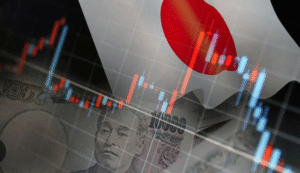$TSL $SSEDY $ENPH
#China #RenewableEnergy #Solar #Asia #GreenEnergy #Sustainability #TechGrowth #SoutheastAsia #Manufacturing #CleanEnergy #SolarInvestments #EmergingMarkets
China’s dominance in the solar power industry has become pivotal to the green energy transformation sweeping across Asia. As countries in the region push for renewable energy adoption to meet sustainability goals, the reliance on Chinese solar power equipment and technology is growing significantly. Southeast Asia, in particular, is seeing an uptick in demand due to increased industrial activity from tech manufacturing and a booming data center industry. According to Nikkei, leading renewable energy providers in the region, such as Solarvest, are ramping up imports of solar modules and components from China to support large-scale installations. The availability of cost-effective Chinese equipment has given these companies a competitive edge, lowering project costs and accelerating timelines. Solarvest representatives have indicated plans to enhance investments in equipment acquisition over the next couple of years, highlighting the ongoing dependency on Chinese innovation and manufacturing strength.
China’s position as the global leader in solar panel production is unparalleled, with its firms like LONGi Green Energy Technology, Trina Solar, and JinkoSolar dominating market share. These industrial giants produce high-efficiency photovoltaic modules at prices significantly lower than Western competitors, making them an essential partner for renewable projects worldwide. The country manufactures nearly 80% of the world’s solar cells and modules, benefiting from economies of scale, advanced supply chain integration, and substantial government support. However, geopolitical factors and trade tensions could pose risks to projects reliant on Chinese imports, particularly as countries like the U.S. push for supply-chain diversification by implementing tariffs or incentivizing domestic production. For investors, stocks like $TSL (Tesla, heavily involved in renewable energy and battery production), $SSEDY (Sungrow Power Supply Co.), and $ENPH (Enphase Energy, prominent in solar microinverters) could see indirect effects as the demand for solar technology rises globally.
The rising energy needs in Southeast Asia are driven by a regional industrial boom, notably in countries like Malaysia, Vietnam, and Indonesia, where governments and private firms are aggressively pursuing carbon-neutral energy solutions. Solar energy is poised to play a critical role, with installations expected to surge over the next decade. The International Renewable Energy Agency (IRENA) estimates that by 2030, investments in Southeast Asia’s renewable energy sector could exceed $1.3 trillion. Analysts predict firms focused on this region, whether they import components from China or manufacture locally, will gain significant market share. The growth of green financing—through ESG loans, green bonds, and renewable energy funds—adds further momentum to the solar energy story, with institutional investors targeting projects that offer long-term sustainability. As energy policies in Southeast Asia lean toward incentivizing renewables, companies tied to the space are likely to benefit from consistent capital inflows.
For China, this evolving green energy ecosystem cements its role as a critical player in the global transition toward renewables. However, increasing reliance on one supplier also raises exposure to potential risks, including geopolitical disruptions, supply chain bottlenecks, or raw material shortages. Despite these concerns, China’s significant investments in R&D and technological advancements in solar energy are expected to keep it at the forefront of the renewable revolution. As emerging markets like those in Southeast Asia continue to expand solar infrastructure, China’s dominance in solar supply chains will serve to sustain growth across the region. Investors keeping watch over renewable energy trends might consider looking for growth opportunities not just in manufacturers but also in auxiliary segments such as logistics, battery storage, and smart grid technologies, each vital to the success of solar projects.





Comments are closed.